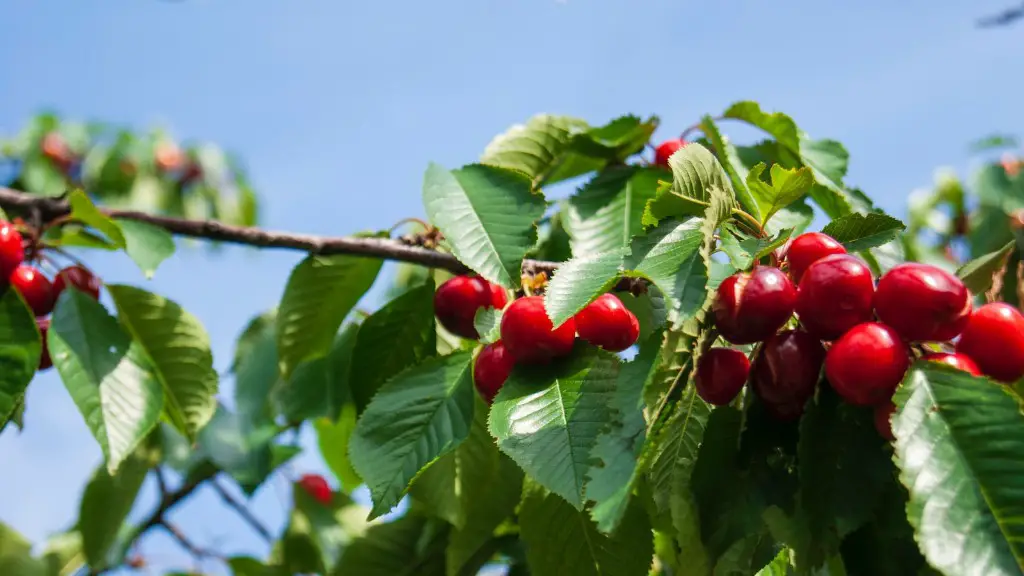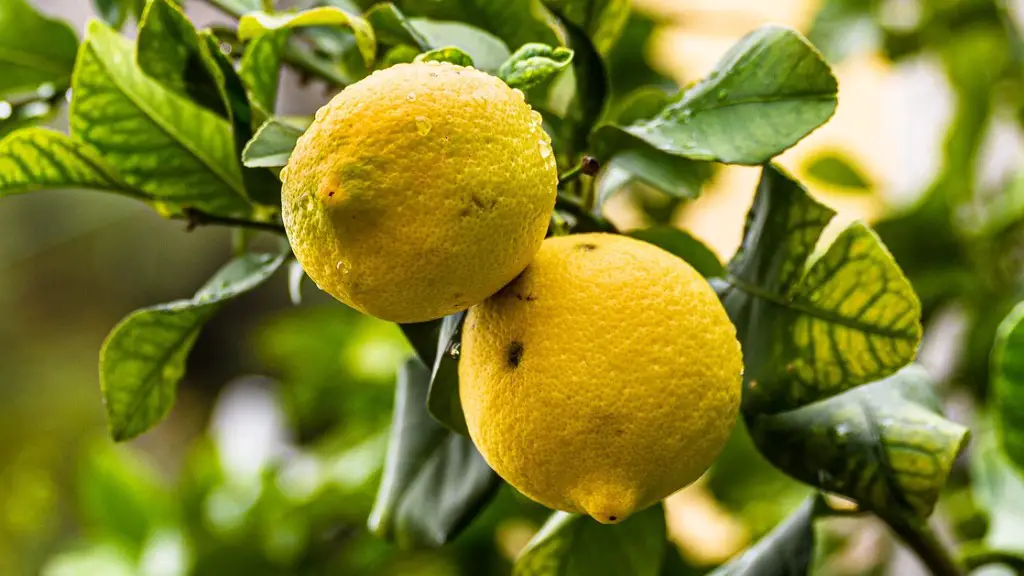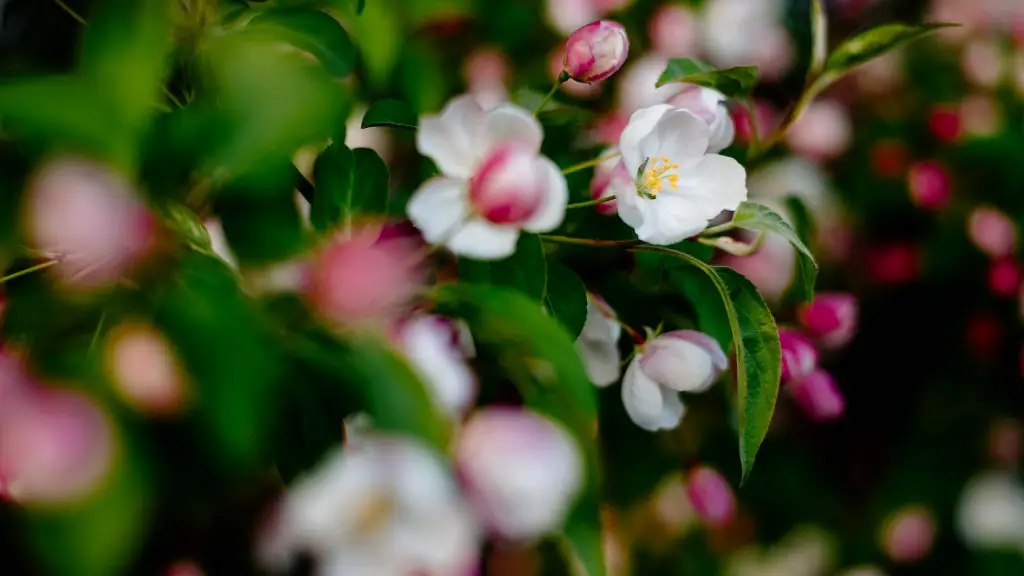Preparing the Site
Preparing the site for planting a weeping cherry tree is a crucial part of the process. Before selecting a tree for planting, take into consideration the amount of space you have, the soil type, sunlight, and the area’s hardiness zone.
Local garden centers and nurseries can provide advice on which cherry tree is best suited to your location. Check the pH level of the soil and determine if the site is heavily populated with existing trees and what impact their root systems may have on the new tree. Make sure the site has well-draining soil, otherwise, the roots will be deprived of oxygen and the tree may suffer.
If the soil is of poor quality, it is recommended to add liberal amounts of compost to it in order to improve the soil quality and promote growth of the tree. The best time to plant a weeping cherry tree is in the late fall or winter.
Selecting and Purchasing a Tree
Weeping cherry trees come in various sizes. When selecting and purchasing a tree, it is important to consider the available space you have and how fast you want the tree to grow. Weeping trees are usually grafted onto a straighter tree for support, so looking for signs of weeping branches — such as flowers and leaves — is important.
Weeping cherry trees come in different varieties and can range from dwarf trees to full-grown trees, so it is important to select the one that meets your needs. Choose a tree that is in a healthy condition and free of any signs of pests or diseases.
Planting the Tree
When planting the tree, make sure to dig a hole two to three times as wide as the root system but of the same depth. Loosen the soil at the bottom of the hole to allow for better root penetration. Add in a combination of soil, compost and manure and make sure to mix the materials well. Gently place the root system inside the hole and cover the roots with soil.
Next, stake the tree and secure it to provide the tree with necessary support. Once the tree is secured, provide a liberal amount of water to the roots in order to settle the soil around it.
Care and Maintenance
When it comes to caring for the newly planted tree, it is important to deep water the tree twice a week, at least, to ensure that the roots are receiving an adequate amount of water. Maintain a two to three-foot radius of fertilised soil around the trunk of the tree and make sure no weeds are growing in the area.
Pruning is necessary in order to maintain the tree’s health. Prune dead and damaged branches as early as possible in order to prevent any further damage. Additionally, use tree stakes and ties when necessary to keep the tree in an upright position.
Protecting the Tree from Disease
The biggest challenge associated with growing a weeping cherry tree is protecting it from the diseases and pests that can cause major damage to the tree. To avoid any major issues, it is crucial to monitor your tree for signs of discoloration, wilting, altered growth, and other signs of disease. In the event of an infestation, be sure to contact an experienced arborist to treat the tree before the disease can cause too much damage.
Fertilizing and Mulching
Fertilizing is one of the most important aspects of properly growing a weeping cherry tree. Apply a slow-release fertilizer to the soil at the beginning of the growing season and then again at the end of summer.
Mulching is also essential because it helps to retain moisture in the soil and keeps weeds away. Spread two to four inches of mulch around the tree, ensuring that the trunk is not in direct contact with the mulch material.
Pruning the Weeping Cherry Tree
Pruning a weeping cherry tree is necessary in order to ensure optimal performance and improve the overall health of the tree. Pruning is also necessary to maintain the weeping shape and protect the tree from disease. To achieve the distinctive weeping shape, prune the tree in the late winter and early spring seasons using hand shears.
It is important to prune any branches that are growing vertically to promote lateral branching and to shape the canopy. Make sure not to prune too much, as the idea is to create the weeping form and allow the tree to grow — not to maintain it in a constant shape.
Controlling Pest and Diseases
Weeping cherry trees are occasionally exposed to pests and diseases such as aphids, scale, leaf spot, powdery mildew, and crown gall. To combat these issues, inspect the tree regularly for any signs of damage or infestation and contact a qualified arborist if necessary.
Additionally, the tree should be regularly sprayed with horticultural oil and insecticidal, or purposed specifically for aphids, scale, and other insects. Fungicides should also be used to control fungal diseases such as leaf spot and powdery mildew.
Integrated Pest Management Methods
Integrated pest management methods involve the use of physical, biological, and chemical agents to control pests. These methods are designed to prevent harm to the environment and are often gentler than the use of chemical sprays and other treatments.
Physical pest control methods involve trapping, diverting, or physically removing pests from the area. Biological control methods involve the use of predator insects and other organisms to control pests. Chemical pest control consists of using chemical sprays, baits, and other forms of air and soil treatments to control pests.
The best way to keep a weeping cherry tree healthy and to prevent pest and disease is to practice good cultural practices, such as proper watering, adequate light and nutrition, and regular pruning. By properly caring for the tree, you will be able to keep pests and diseases in check and maximize the health of the tree.


